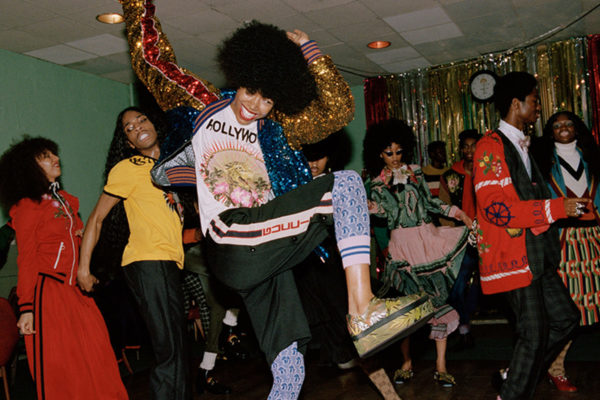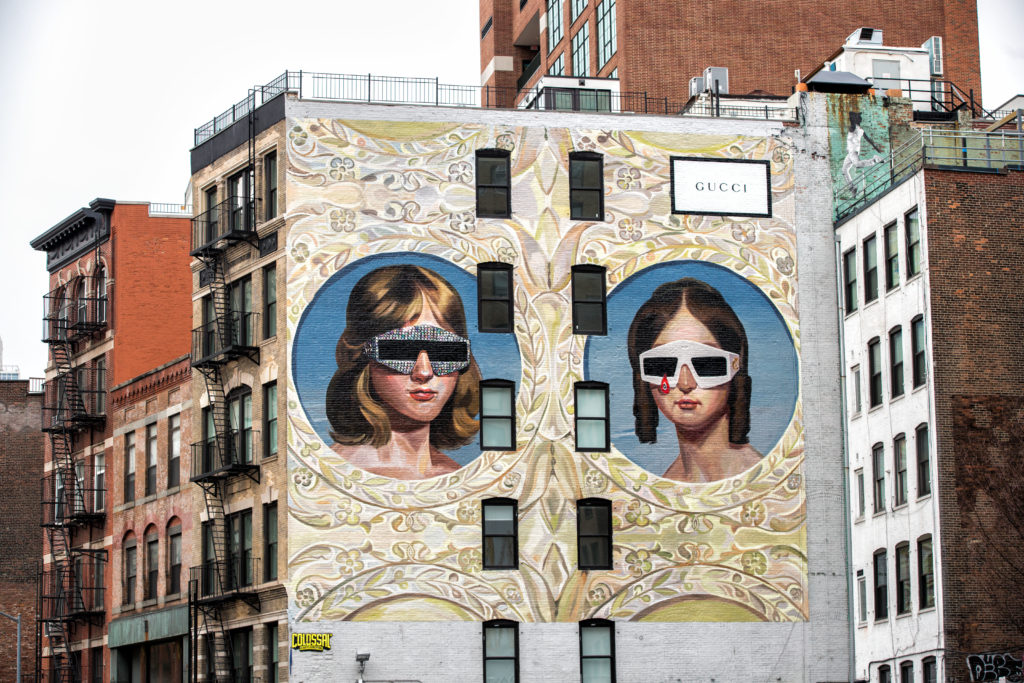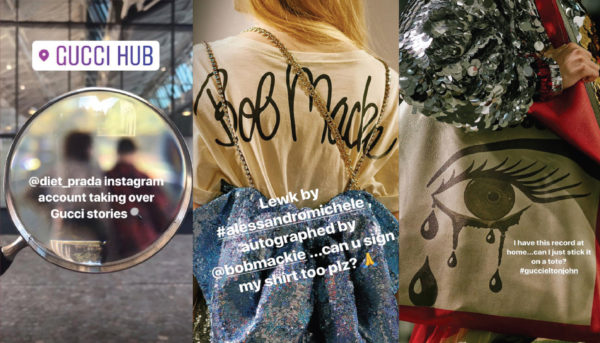Engaging a new generation
Consuming and creating content on social media is a way of life for the Millennial generation. For Gucci, it is an opportunity to engage with a truly global community. Robert Triefus, Executive Vice President, Brand and Customer Engagement, explains how Gucci builds its following on social media platforms.

What are the guiding principles of Gucci’s digital strategy?
Two things are fundamental to the way we develop the strategy and narrative that appear on our social media platforms – authenticity and inclusivity. They are at the heart of Alessandro Michele’s philosophy, and the way he creates his collections. In social media terms, it means we see Gucci’s platforms both as open doors to the outside world – allowing him to co-create with other people – and a reflection of what Millennials believe in. So the campaigns he creates, the way he brings his fashion shows to life, and the original content we shoot for our social media platforms, are all very coherent and essentially telling this same narrative. Alessandro’s vision of fashion is really to allow individuals to express themselves. This is what our brand stands for today, and what drives our digital strategy.
Could you give some examples of that strategy in action?
#GucciGram, where Alessandro invited artists and illustrators to repurpose three of Gucci’s iconic motifs on Instagram, and #24HourAce, where the brand handed over the reins of its Snapchat account to a series of different artists for a full 24 hours and asked them to shoot a creative and colorful mini-video centered around the Ace sneakers.
The #TFWGucci meme project, to launch of a new timepiece collection, brought together digital artists from around the world. These artistic connections can also develop well beyond a single campaign. For example, Alessandro’s discovery on Instagram of Unskilled Worker – the moniker used by British artist Helen Downie – led to a collaboration around an exclusive capsule collection.
How successful has Gucci been in engaging with new generations on social media?
Gucci has emerged in research in recent months as one of the brands achieving the greatest engagement through its content, especially on Instagram thanks to its authentic and consistent narrative and also its collaborations.
Our greatest engagement is coming from our original creative content, often through collaboration – either in the form of a creative project, or through a friend of the House with a large personal following who appears in the content itself. For a luxury brand, it’s also important to distribute that same narrative across all your different touchpoints, which not only include social media, but also your website, windows, packaging, campaigns, etc. In my view, that ability to connect all the dots in a coherent, cohesive way, is a really fundamental element in Gucci’s success today.
What has been key to achieving that sense of coherence?
Clearly, it comes from having a sole creative director, delivering a unique vision across all the collections. That said, the task is not an easy one due to the sheer number of touchpoints. But it’s important for our community to feel that wherever they are engaging with a brand, the message is coherent and it fits in with the narrative. If you are unable to do that, the brand becomes very disconnected. I think that is especially a challenge for brands with multiple creative directors or, for example, where their fragrance business is separated from their fashion activities. Our strength comes from the fact that we express one consistent narrative with one voice.
As for the content itself, how does Gucci drive that engagement?
Our content operates at multiple levels. You can look at a photo or illustration and simply enjoy the aesthetics at face value. However, if you want to dig down, our content has a deeper level. For example, the illustrations created for Gucci by digital artist Ignasi Monreal for our Spring Summer 2018 campaign are inspired by modern art and there is a story behind each image. If you read the narratives on our Instagram posts, there is an intellectual and cultural level to them. Overall, I would say there is a high degree of sophistication about our social media content that creates a stronger emotional engagement.

How does Gucci engage with the various social media networks?
The first point is that we are continuously generating content and tailoring it for different platforms – Instagram, Twitter, Facebook, WeChat and Snapchat. The days of launching campaigns in line with two seasonal collections and the pre-collections are over. There is now a voracious appetite for our narrative, so the rhythm and cadence of content generation is rapid. As for the media, Instagram is probably our signature platform in terms of traction and engagement. We currently have 21 million followers and the visual nature of Instagram allows us to display our content, while the addition of Instagram Stories has given us a very powerful medium for bite-size video – which is extremely important today.
Finally, how does Gucci’s social media strategy reach out to Chinese Millennials?
We have a dedicated team in China, creating and deploying our content on local social media platforms, the most important of which is WeChat. That said, the content is coming from and inspired by what Alessandro is creating at the center. So, because Chinese Millennials particularly enjoy elements such as emojis and animations, we are embedding more of those into our content – while maintaining the artistic foundation, which comes from Alessandro. For example, this Chinese New Year, we launched a campaign to mark the Year of the Dog with some innovative content in the form of two dog animojis, that respond to facial recognition – which had not been done before. China is clearly the world’s biggest fashion market and we’ve had a website there for several years, and have just launched an e-commerce site. It is fundamentally important for us.


